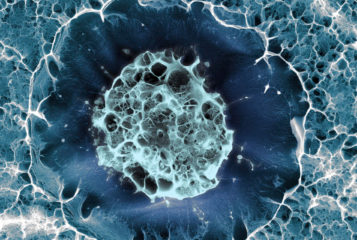Australian scientists have successfully grown 'mini kidneys' from stem cells derived from skin tissue.
The team from the Murdoch Children's Research Institute in Melbourne, Australia, have grown mini kidneys before, but this time the mini-organ, or organoid — which is a tiny ball of tissue just one centimetre across — formed all the cell types found in the human kidney.
Lead researcher Professor Melissa Little said: 'The mini-kidney we have been able to grow this time is very complex and more like the real organ.' But she cautioned that what the lab had grown is 'not a kidney, it's a kidney model'.
The team believes these new creations will respond to drugs as a normal organ might, and may even lay the foundations for bioengineering replacement kidneys in the future. They reported their findings in the journal Nature.
Professor Little's team used signalling factors to carefully direct the induced pluripotent stem cells, which were derived from skin cells, to turn into two different kidney progenitor cell types. After several weeks, the cells had spontaneously formed into kidney organoids with collecting ducts, nephrons, connective tissue and blood vessels, in a structure that appears similar to the kidney found in a developing human fetus.
Professor Jamie Davies of the University of Edinburgh, who was not involved in the study, explained that a fully functioning, lab-grown kidney is not just around the corner: 'There is a long way to go until transplantable kidneys can be engineered, but [the new] protocol is a valuable step in the right direction.'
The research should, however, allow scientists to make model kidneys from specific patients, using their own skin cells, which could be used to test treatments. 'Making stem cells from patients with kidney disease, and then growing a [mini] kidney that matches the patient, will help us understand that patient's disease and develop treatments for them,' Professor Little said.





Leave a Reply
You must be logged in to post a comment.